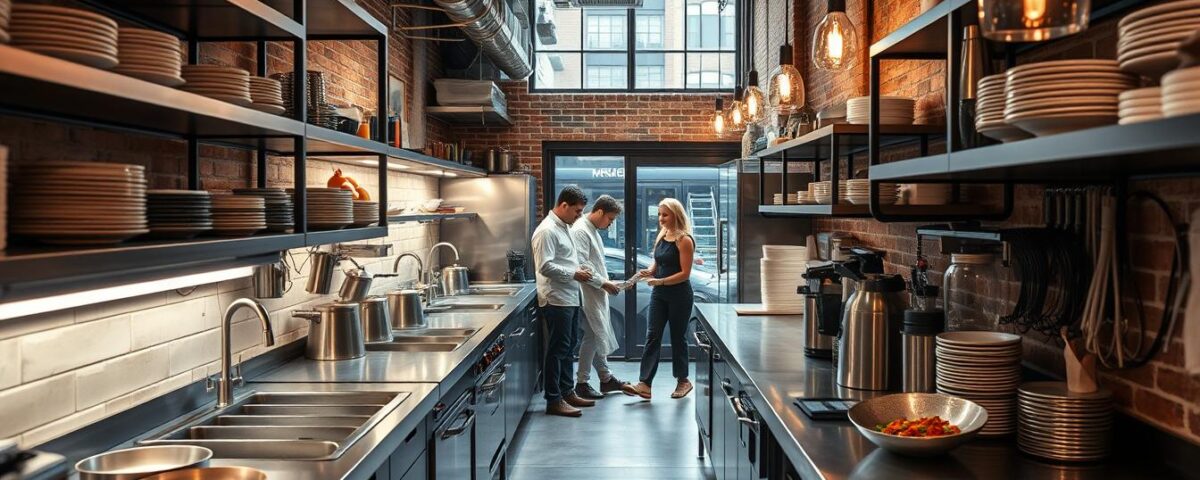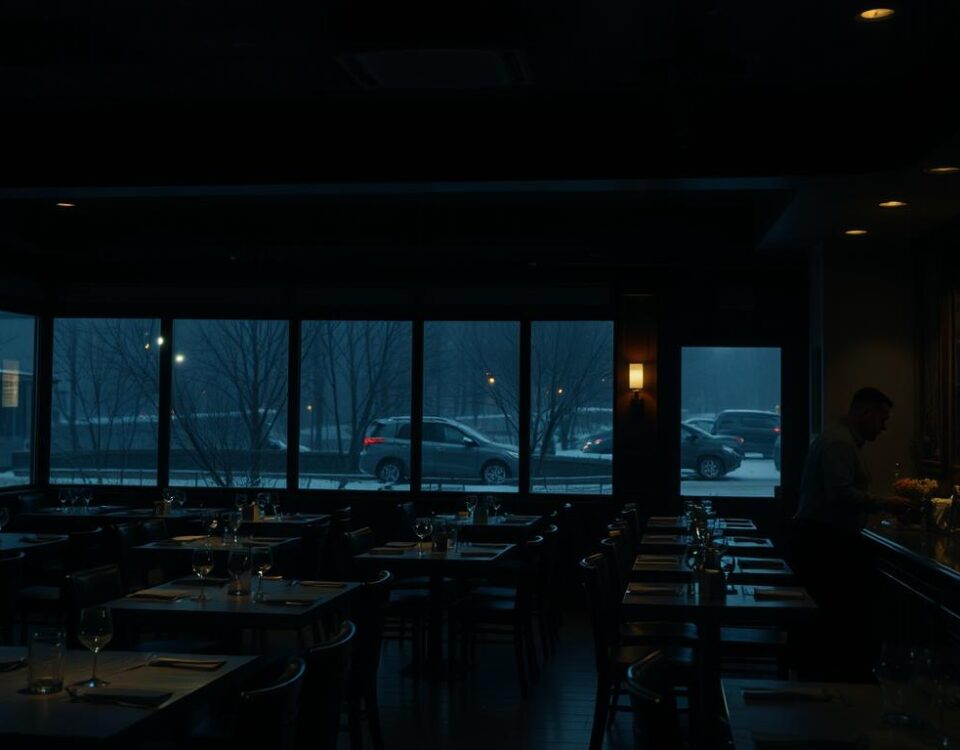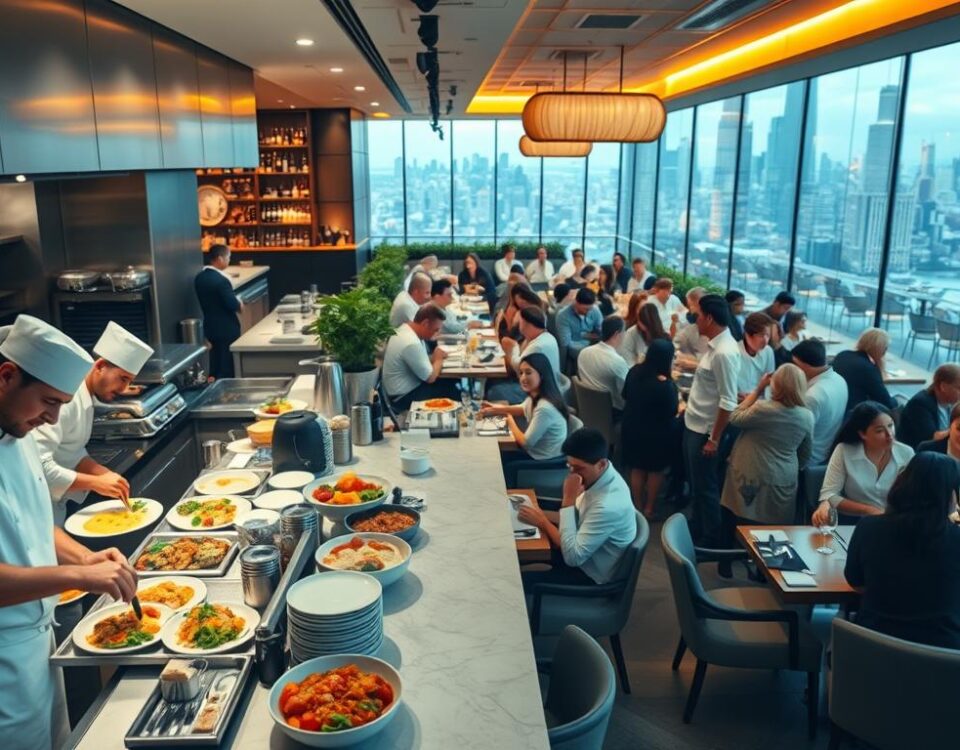
6 Hidden Secrets to Triple Engagement on Your Restaurant’s Instagram
October 9, 2025
The Ultimate Guide to Modernizing Your Restaurant for Maximum Profit
October 10, 2025As a restaurateur looking to expand your business or an entrepreneur eager to dive into the food industry, you’re likely aware of the challenges and costs associated with traditional restaurant models. I recall a conversation with a fellow restaurateur who was hesitant to venture into the ghost kitchen space due to concerns about profitability. However, with the rise of food delivery, ghost kitchens have become an attractive option. Did you know that the food delivery market is projected to grow by 11.4% annually, making it a lucrative opportunity for those willing to adapt?
Ghost kitchens offer a revolutionary business model that allows you to start a food delivery business without the overhead costs of traditional restaurants. With lower startup costs and the flexibility to adjust your menu offerings, ghost kitchens represent a significant opportunity. In this guide, I’ll walk you through a step-by-step approach to launching a profitable ghost kitchen in just 30 days, sharing insights from my experience in the restaurant industry.
Key Takeaways
- Understand the concept of ghost kitchens and their benefits
- Learn how to choose the right location for your ghost kitchen
- Discover how to create a menu that thrives in a delivery-only model
- Find out how to partner with food delivery services effectively
- Gain insights into marketing strategies for your ghost kitchen
What Is a Ghost Kitchen? The Future of Food Delivery
The concept of a ghost kitchen has revolutionized the food delivery industry. Ghost kitchens, also known as dark kitchens or virtual kitchens, are commercial kitchens optimized for third-party food delivery services. They operate without a traditional dine-in space, focusing solely on preparing food for delivery.
These kitchens are typically located in areas with high delivery demand and are staffed by back-of-house personnel who prepare dishes from menus available only for delivery. This model allows for a virtual restaurant to operate with a digital storefront.
Ghost Kitchen vs. Traditional Restaurant Model
Unlike traditional restaurants, ghost kitchens have lower overhead costs since they don’t require a storefront or front-of-house staff. This fundamental shift in business approach enables ghost kitchens to focus on food preparation and delivery logistics.
Key differences between ghost kitchens and traditional restaurants include:
| Feature | Ghost Kitchen | Traditional Restaurant |
|---|---|---|
| Storefront | No | Yes |
| Dine-in Space | No | Yes |
| Staff | Back-of-house only | Both front and back-of-house |
Types of Ghost Kitchens and Which One Is Right for You
There are several types of ghost kitchens, including commissary kitchens, commercial kitchens, incubator kitchens, and kitchen pods. Each model has its unique features and benefits, catering to different business needs and goals.
For instance, commissary kitchens provide shared kitchen space, while incubator kitchens offer resources and support for new entrepreneurs. Understanding these options is crucial in determining the most suitable ghost kitchen model for your business.
Why Ghost Kitchens Are Booming in 2023
The rise of ghost kitchens in 2023 is a phenomenon driven by changing consumer behaviors and technological advancements. As a result, the food industry is witnessing a significant shift towards delivery-oriented business models.
The Economics: Lower Overhead, Higher Profits
One of the primary reasons ghost kitchens are thriving is their economic viability. By eliminating the need for dining space and front-of-house staff, ghost kitchens significantly reduce overhead costs. This model allows for higher profits as the savings on rent, staffing, and utilities are substantial compared to traditional restaurants. For instance, ghost kitchens can operate out of commercial kitchen spaces in less expensive locations, further reducing costs.
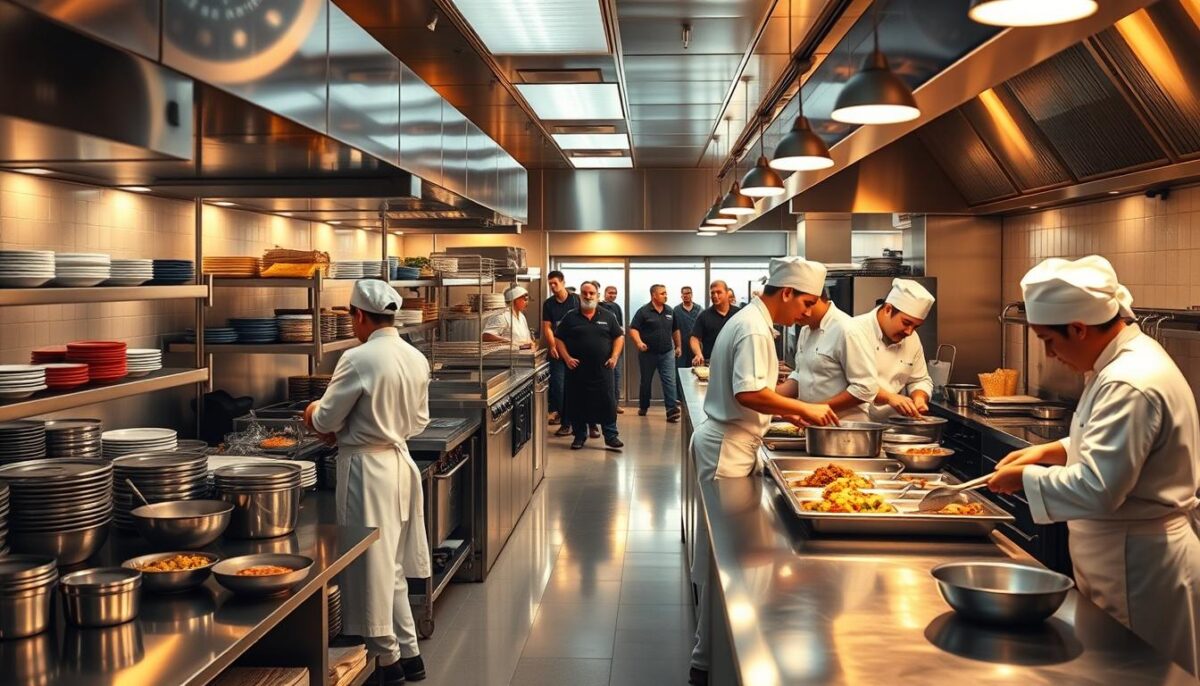
Meeting the Growing Demand for Food Delivery
The growth of food delivery services, driven by major delivery apps like Uber Eats, DoorDash, and Grubhub, has created a lucrative market for ghost kitchens. With 60% of consumers in the United States ordering delivery or pickup at least once a week, ghost kitchens are perfectly positioned to meet this demand. They offer a convenient, high-quality business model that caters to the increasing number of people working from home and seeking alternatives to cooking. By focusing exclusively on delivery operations, ghost kitchens are capitalizing on the trend and providing a low-risk entry point into the industry with significantly lower startup costs.
- Lower operational costs compared to traditional restaurants
- Increased demand for food delivery services
- Flexibility and scalability in business operations
Planning Your Ghost Kitchen Concept
Launching a successful ghost kitchen requires careful planning and a deep understanding of your target market. As with any business, you need to understand your customers’ preferences and tailor your offerings accordingly.
For instance, if you’re considering serving organic street tacos, you need to determine if there’s a demand for such a product in your area. Conducting extensive market research is crucial to identify profitable food concepts and underserved niches in your target delivery area.
Market Research: Finding Your Niche
To identify your niche, start by analyzing online trends and statistics on food consumption in your area. Look for gaps in the market that your ghost kitchen can fill. This involves understanding consumer behavior and preferences.
- Research popular cuisines and dishes in your target area.
- Analyze consumer reviews and feedback on existing food delivery services.
- Identify areas with high demand for specific types of cuisine.
Analyzing Competition and Creating Your USP
Analyzing local competition is vital to creating a unique selling proposition (USP) that differentiates your ghost kitchen from others. Evaluate competitors’ menus, pricing, delivery areas, and customer reviews to identify market gaps.
| Competitor | Menu Offerings | Pricing | Delivery Area |
|---|---|---|---|
| Kitchen A | Italian, Pizza | $10-$20 | City Center |
| Kitchen B | Mexican, Tacos | $8-$15 | Suburbs |
| Your Kitchen | Organic Street Tacos | $12-$18 | City Center, Suburbs |
“The key to success in the ghost kitchen business is to find a need in the market and fill it effectively.”
Developing a Business Plan for Your Ghost Kitchen
A comprehensive business plan is essential for your ghost kitchen’s success. It should include financial projections, operational strategies, marketing approaches, and growth plans. This plan will help you secure funding if needed and guide your business decisions.
By following these steps and creating a well-thought-out plan, you can establish a successful ghost kitchen that meets the demands of your target market and stands out from the competition.
Creating a Delivery-Optimized Menu
When launching a ghost kitchen, crafting a delivery-optimized menu is crucial for success. A well-designed menu not only streamlines operations but also ensures that food quality remains consistent during delivery.
Streamlining Your Menu
For a ghost kitchen, it’s essential to have a focused menu with fewer than 10 items. This approach reduces complexity, minimizes waste, and helps customers make decisions more quickly when ordering online. A streamlined menu also allows for better inventory management and reduced costs.
Selecting Foods That Travel Well
Not all foods are suitable for delivery. When creating your menu, consider items that maintain their quality during transport. Foods like pasta dishes, rice bowls, and properly packaged fried items travel exceptionally well. On the other hand, delicate salads, foods with temperature-sensitive components, or items that get soggy quickly should be avoided.
| Food Item | Delivery Suitability | Reason |
|---|---|---|
| Pasta Dishes | High | Retains temperature and texture well |
| Delicate Salads | Low | Gets soggy or damaged during transport |
| Rice Bowls | High | Remains flavorful and textured |
Strategically pricing your menu items is also crucial. You need to maintain healthy profit margins while remaining competitive in the delivery marketplace. Consider factors like delivery fees and packaging costs when setting your prices.
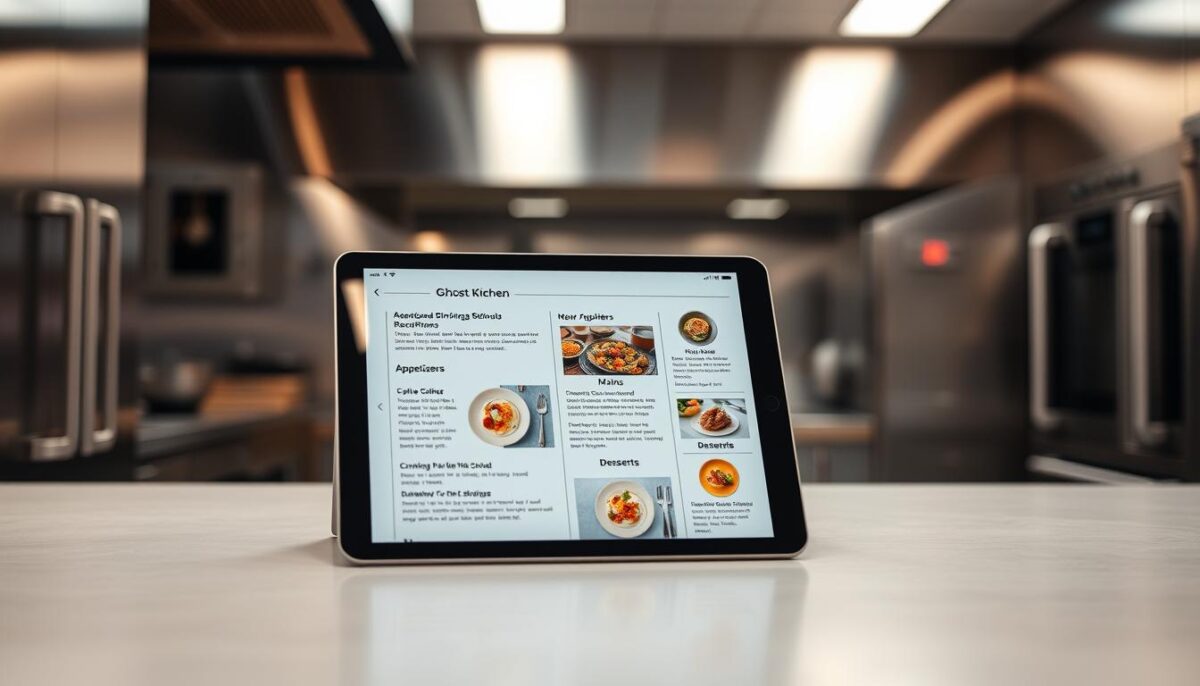
How to Launch a Ghost Kitchen in 30 Days: Week-by-Week Plan
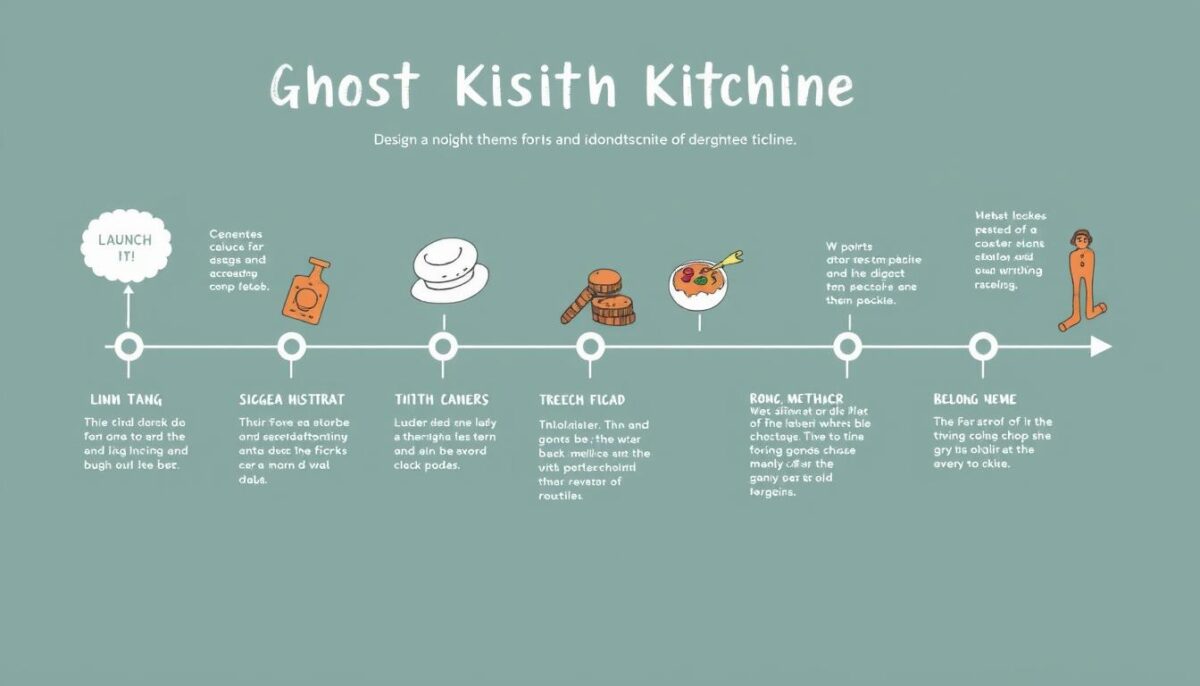
Launching a ghost kitchen in 30 days requires strategic planning and swift execution. To achieve this, breaking down the process into manageable weekly tasks is essential.
Week 1: Concept Development and Legal Setup
During the first week, focus on finalizing your ghost kitchen concept, conducting market validation, securing necessary business licenses and permits, setting up your business entity, and beginning to develop relationships with suppliers. This foundational work is crucial for a successful launch.
Week 2: Securing Your Kitchen Space and Equipment
In the second week, find and secure an appropriate kitchen space, whether through a dedicated ghost kitchen facility, commissary kitchen, or other arrangement. Additionally, source and purchase essential equipment to ensure your kitchen is fully operational.
Week 3: Setting Up Delivery Systems and Hiring Staff
During the third week, concentrate on operational setup, including establishing delivery partnerships or in-house delivery systems, hiring and training kitchen staff, setting up inventory management systems, and finalizing your menu and recipes. This step is critical for ensuring smooth operations.
Week 4: Marketing and Soft Launch
In the final week, focus on marketing activities needed for a successful launch, including setting up your online presence, creating compelling food photography, establishing profiles on delivery platforms, and conducting a soft launch to gather feedback. This phase is vital for creating buzz around your ghost kitchen.
Throughout this 30-day timeline, be prepared to face potential challenges and bottlenecks. Strategies for overcoming these obstacles include staying flexible, prioritizing tasks, and maintaining open communication with your team and suppliers. By following this week-by-week plan, you can successfully launch your ghost kitchen within the desired timeframe.
Securing the Perfect Ghost Kitchen Location
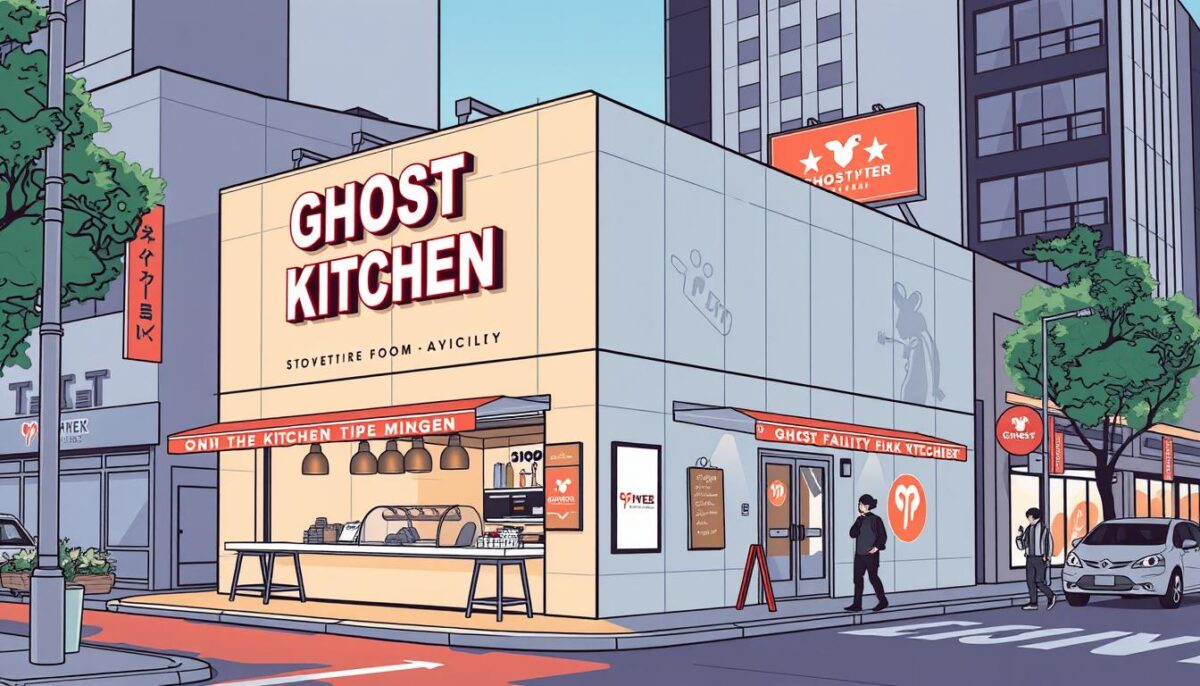
Securing the perfect ghost kitchen location is a nuanced process that requires careful consideration of several factors. While a ghost kitchen doesn’t rely on foot traffic like traditional restaurants, its location significantly impacts delivery efficiency and customer satisfaction.
The location should be convenient for delivery drivers and proximal to your target demographic. This ensures that your food reaches customers quickly, maintaining quality and enhancing the overall customer experience. Accessibility for delivery drivers, including parking and ground-floor locations, is also crucial.
What to Look for in a Ghost Kitchen Facility
When evaluating a potential ghost kitchen facility, several key features should be on your checklist. Look for adequate utilities, proper ventilation, designated loading areas, and compliance with health department regulations. The facility should also be easily accessible for delivery drivers, with considerations for parking and proximity to major roads.
Various location options are available, including dedicated ghost kitchen facilities, shared commissary spaces, and even repurposed retail locations. Each has its pros and cons, which should be weighed against your business needs and budget.
Negotiating Your Lease and Understanding Costs
Negotiating a favorable lease for your ghost kitchen involves understanding what equipment is included and what you’ll need to provide. It’s also crucial to comprehend the cost structure, including rent, utilities, and any additional fees. Comparing these costs with traditional restaurant leases can help you make an informed decision.
Understanding the logistics of your chosen location, such as parking for delivery drivers and proximity to major roads, is vital for efficient delivery operations. By carefully evaluating these factors, you can secure a ghost kitchen location that supports your business goals and enhances your customers’ experience.
Technology and Delivery Logistics
In the world of ghost kitchens, technology plays a crucial role in streamlining operations and enhancing customer experience. As a ghost kitchen owner, leveraging the right technology can make all the difference in managing orders, optimizing delivery, and maintaining customer satisfaction.
Setting Up Your Online Ordering System
An efficient online ordering system is the backbone of any ghost kitchen. Options include third-party platforms, direct ordering websites, and mobile apps. For instance, CloudKitchens provides proprietary software that aggregates all delivery orders into one place, reducing errors and increasing efficiency.
Third-Party vs. Native Delivery: Pros and Cons
When it comes to delivery, ghost kitchens can choose between third-party services like DoorDash, Uber Eats, and Grubhub, or native delivery options. While third-party apps offer broad reach, they come with fees. Native delivery, on the other hand, allows for branded platforms and retained customer data, as seen with solutions like ShiftPixy.
Managing Multiple Delivery Platforms Efficiently
Managing orders across multiple delivery platforms can be challenging. Order aggregation systems can consolidate incoming orders onto a single tablet or screen, reducing errors and streamlining kitchen operations. This technology is crucial for maintaining efficiency and ensuring timely deliveries.
By optimizing technology and delivery logistics, ghost kitchens can significantly enhance their operational efficiency and customer satisfaction. It’s about finding the right balance between technology investment and operational needs.
Marketing Your Ghost Kitchen for Maximum Visibility
The success of a ghost kitchen heavily relies on its marketing strategy, given the absence of foot traffic. As a ghost kitchen owner, you need to focus on building a robust online presence to attract and retain customers.
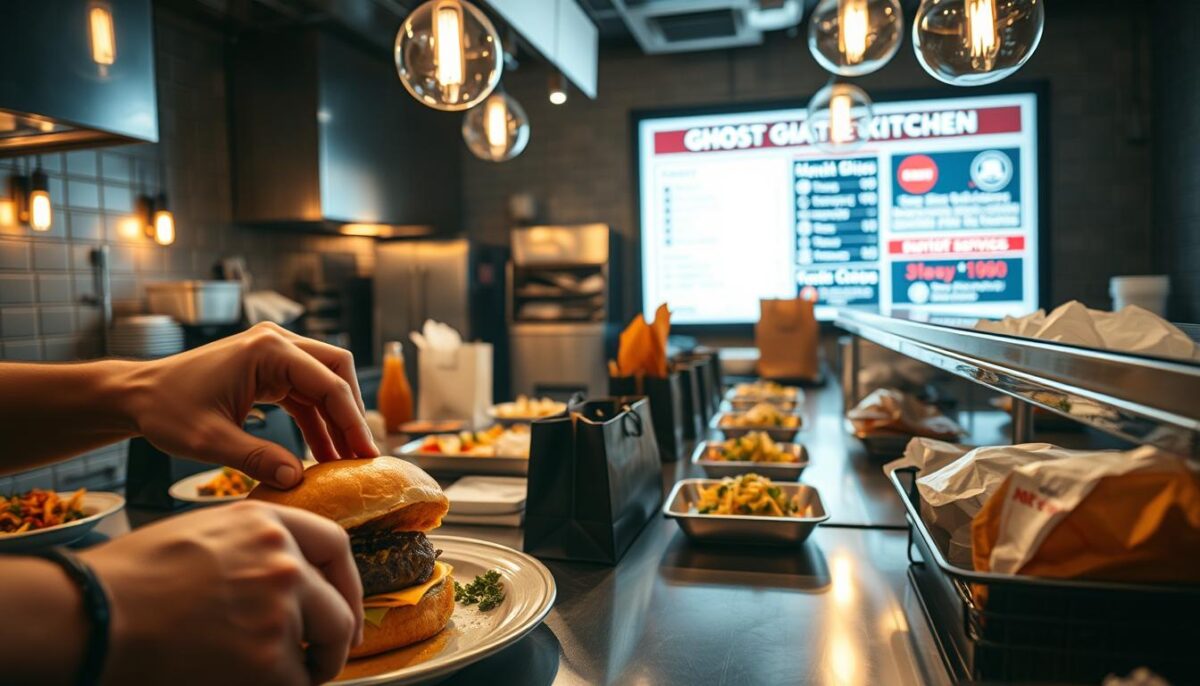
Building a Digital Presence
To start, you need a professional website that showcases your menu, pricing, and brand story. Optimizing your website for local SEO is crucial, even without a physical storefront. Claiming and optimizing your Google My Business listing and other relevant directories will help potential customers find you online.
Key elements of a strong digital presence include appealing food photography, customer reviews, and clear calls-to-action that drive online orders.
Social Media Strategies
Social media is a powerful tool for ghost kitchens. Focus on platforms like Instagram and Facebook, where food photography can shine. Share behind-the-scenes content, engage with your followers, and run targeted ads to build brand awareness and drive sales.
Leveraging user-generated content by encouraging customers to share their experiences and photos can also build credibility and trust with potential customers.
Email Marketing and Loyalty Programs
Email marketing campaigns can help retain customers and encourage repeat orders. Implementing loyalty programs that reward customers for their purchases can increase customer lifetime value. Collecting email addresses during the ordering process is a crucial step in building your email list.
Promotional strategies like limited-time offers, bundle deals, and strategic discounting can drive initial trials and boost sales during slower periods.
To measure the effectiveness of your marketing efforts, track key performance indicators such as online orders, customer acquisition costs, and customer retention rates. This will help you understand which marketing channels and tactics provide the best return on investment.
Conclusion: Your Roadmap to Ghost Kitchen Success
As we wrap up this comprehensive guide, it’s clear that launching a profitable ghost kitchen in 30 days is an achievable goal with the right strategy. By following the steps outlined in this article, you’ll be well on your way to establishing a thriving food delivery business that meets the growing demand from customers.
The key to success lies in careful planning, efficient operations, and effective marketing strategies. This includes optimizing your menu for delivery, selecting the right kitchen location, integrating technology seamlessly, and creating a strong digital presence.
As you embark on this journey, remember that challenges are inevitable, but with the right mindset and preparation, you can overcome them. The future outlook for ghost kitchens is promising, representing a significant opportunity in the evolving restaurant industry landscape.
For those ready to scale, consider expanding to multiple locations, launching additional virtual brands, or transitioning to a hybrid model. With persistence and the right approach, your ghost kitchen can become a successful and profitable business in just a short time.
Take the first step today, and start building your ghost kitchen empire. With dedication and the right guidance, you can turn your vision into a thriving reality.
FAQ
What is the ideal location for a ghost kitchen?
The ideal location for a ghost kitchen is a commercial kitchen space with adequate equipment and storage, preferably in a densely populated urban or suburban area with high demand for food delivery.
How do I choose the right menu for my ghost kitchen?
To choose the right menu, I consider factors like food trends, competition, and target audience preferences. I also focus on dishes that travel well, are easy to execute, and can be prepared in large quantities.
What are the benefits of partnering with third-party delivery services?
Partnering with third-party delivery services like Uber Eats, GrubHub, or DoorDash can expand my customer base, simplify logistics, and reduce the costs associated with maintaining my own delivery fleet.
How can I optimize my ghost kitchen’s online presence?
To optimize my ghost kitchen’s online presence, I create a strong brand identity, engage with customers on social media, and ensure my menu is easily accessible on my website and delivery platforms.
What equipment do I need to start a ghost kitchen?
To start a ghost kitchen, I need commercial-grade cooking equipment, such as ovens, stoves, and refrigerators, as well as packaging materials and technology for managing online orders and delivery logistics.
How do I manage multiple delivery platforms efficiently?
To manage multiple delivery platforms efficiently, I use a centralized online ordering system that integrates with various delivery services, allowing me to streamline orders, track performance, and adjust my strategy as needed.
What are some effective marketing strategies for ghost kitchens?
Effective marketing strategies for ghost kitchens include leveraging social media, email marketing, and loyalty programs to build a loyal customer base and drive repeat business.
How can I ensure the quality of my food during delivery?
To ensure the quality of my food during delivery, I focus on packaging that keeps food hot or cold, as needed, and partner with reliable delivery services that can maintain timely and secure transportation.
